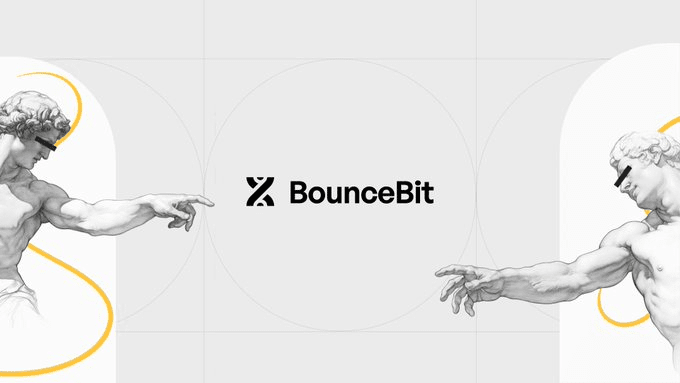In-depth Analysis of BounceBit (Part 1): The Paradigm Shift of Dual-Asset Staking and Re-Staking Ecosystem
One of the largest structural changes in the crypto world over the past few years is that 'staking' has gradually evolved from a single PoS consensus security measure into an enormous ecosystem centered around liquidity derivatives (LSD), re-staking, cross-chain collateral, and yield optimization. From Lido to Eigenlayer, the narrative in this track has continuously evolved. BounceBit emerged in this context, attempting to build a new infrastructure layer through 'dual-asset staking + integration of CeFi and DeFi'.
First, it is important to understand the positioning of BounceBit. Most PoS networks have a single-chain, single-asset staking logic, where users stake native tokens on a specific chain to secure the network and earn returns. However, BounceBit attempts to change this traditional pattern through a dual-asset staking model of 'BTC + ETH'. Users can not only participate in validation through BTC within the BounceBit ecosystem but can also map mainstream assets to form a re-staking logic. This means that it inherently connects the most valuable and liquid asset pools in the crypto market—Bitcoin and Ethereum.
More importantly, BounceBit does not merely focus on the single aspect of 'staking'. It emphasizes the combination of 're-staking' and derivative finance. The main issue with previously staked assets has been insufficient liquidity and low asset efficiency. While LSTs (Liquid Staking Tokens) can address some issues, their risk exposure still remains limited to a single protocol. BounceBit, through a combination of CeFi custody and on-chain protocols, allows staked assets to not only generate yield certificates on-chain but also to be further integrated into different ecological applications, such as lending, derivative trading, and even as cross-chain collateral, forming a higher level of financial leverage.
From the perspective of the integration of CeFi and DeFi, BounceBit's design is highly forward-looking. CeFi has been criticized for its black box and trust issues in recent years, while DeFi faces challenges related to scalability, compliance, and user experience. BounceBit combines the two, providing users with a verifiable and more secure staking environment through institutional-level custody and transparent on-chain logic. For institutional funds, this is an important entry point; for retail users, it is also a low-barrier way to enter the complex DeFi re-staking ecosystem.
In the long term, the potential of BounceBit lies in its ability to grasp the 're-staking narrative of BTC'. Bitcoin itself lacks smart contract capabilities, which has led to its long-term underestimation in the DeFi world. However, protocols like BounceBit that incorporate BTC into staking and re-staking networks not only turn it into a tool for security and yield but can also serve as the underlying collateral in the Web3 financial system. If this logic is widely accepted by the market, Bitcoin will no longer be merely a 'store of value' but will truly enter the stage of financialization and productive assets.
Additionally, from the perspective of governance and token economic models, the core token of BounceBit plays a triple role in network governance, incentive distribution, and staking security. Through a tokenized incentive structure, BounceBit can effectively coordinate multiple participants such as validators, users, liquidity providers, and institutional funds, ensuring the entire ecosystem operates sustainably. Its value capture logic relies not only on transaction and staking volumes but is also highly correlated with the expansion speed of the entire re-staking ecosystem.
In terms of competitive landscape, the core difference between BounceBit and Eigenlayer is that Eigenlayer focuses on the Ethereum ecosystem, emphasizing 'security reuse'; whereas BounceBit represents a new paradigm of 'cross-asset + integration of CeFi and DeFi'. In other words, it is not merely an expansion tool on Ethereum, but aims to reshape the financial roles of BTC and ETH on a broader scale.
In summary, BounceBit is seizing the largest incremental market of the re-staking narrative—BTC—and through its bridging role between CeFi and DeFi, provides both institutions and retail investors a channel to enter this ecosystem. If Eigenlayer represents a paradigm innovation within Ethereum, then BounceBit is more like an attempt to financialize cross-chain operations in the entire crypto world. Its future value depends on whether it can truly unlock the potential of BTC and find the optimal balance between security and liquidity.
@BounceBit $BB #BounceBitPrime




